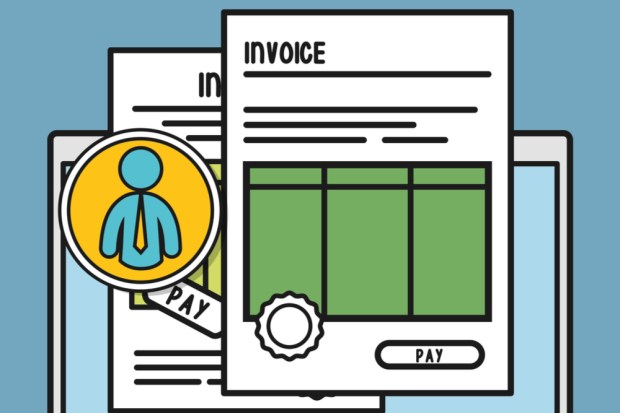Corporates May Be Approaching AP Automation All Wrong

Perhaps the biggest takeaway from Hyland and Statista‘s new accounts payable (AP) report is that, frankly, there isn’t much new to be said about AP automation trends at all. The survey explores how AP processionals approach automation, and comes to the same conclusion that many surveys before it have come to: The struggle with manual processes continues, despite increased investment in automation.
Enterprise software firm Hyland published its 2018 State of Accounts Payable Report this week, compiling the responses of CFOs, accounts payable managers, controllers, analysts and other executives at the head of the AP table. The result is the same story that’s been around for several years now. However, while the survey did not necessarily reveal any groundbreaking trends, the findings’ lack of differentiation from the status quo may be revealing in and of themselves.
Danielle Simer, solution marketing manager at Hyland, said that a lack of change, in terms of how AP professionals are adopting effective automated strategies, could possible signal a lack of understanding about accounts payable automation altogether.
“There may be this lack of understanding out there, I think, of what [full-blown] AP automation technology is and what it can do,” Simer said in a recent interview with PYMNTS. “You have some people that say, ‘We email our invoices around for approval,’ and they consider that a paperless or automated process — and it’s really not.'”
What that’s led to is a continued rise in investments in automated solutions, without much improvement in process efficiencies.
On the plus side, two-thirds of survey respondents said they have achieved either fully or mostly automated AP processes. Anecdotally, survey respondents may have a skewed idea of what “automation” really means. Hyland found that, in some cases, ERPs are the only solutions used to automate AP processes, for instance. With the majority of businesses reporting high levels of automation, one would think that the benefits of automation — a reduction in invoice processing time, errors, exceptions and other points of friction — would be realized by the majority of respondents, too. Yet, Hyland’s report revealed this simply isn’t the case.
More than a quarter of survey respondents cite too many paper documents as their top AP challenge, while nearly the same amount said there is too much manual data entry and that invoice exceptions delay processing. One-fifth said their automation solution is not user-friendly, and one-fifth said data errors are delaying processing times, too.
Simer said that over-reliance on ERPs may be a consequence to that lack of understanding of AP automation technology, and the full set of solutions such tools offer. The result, she noted, is that “people are still experiencing challenges, even when they say they’re automated.”
Accounts payable teams are stressed. Hyland found that stress was cited as the top issue plaguing AP departments as a consequence of processing delays — though delays in receiving shipments from suppliers, penalties or fines, cancelled contracts and an overall damaged supplier relationship are all common consequences of these process delays, which prevent businesses from processing invoices and paying suppliers on time.
According to Simer, “the definition of ‘fully automated‘ is not consistent across all organizations.” It’s no surprise, then, that Hyland found average days payable outstanding (DSO) times also lack consistency across survey respondents. Twenty-nine percent of respondents said they only take up to five days to pay an invoice, and, on average, respondents take 20 days to pay invoices. Yet, more than one-third have DSO times of at least 21 days, with some taking between 61 and 120 days to settle invoices.
Hyland’s research suggests that this is not because businesses aren’t paying attention to invoice payment times. Indeed, 87 percent of respondents said time-to-payment is a top performance metric for them, while the same was said about time-to-approval. The vast majority agreed that invoice status and invoice due date are two key pieces of information for their jobs. Businesses also appear to understand the risks of late payments, which are cited as the number-one risk resulting from a lack of visibility and track-ability in AP processes.
While corporates are increasingly lengthening payment terms with their suppliers in a strategic effort to float cash longer, a lack of control in accounts payable can tip payment delays into past-due territory. Simer said it can safely be assumed that once late payments become a reality, a firm’s negotiating power goes out the window.
“It makes sense: If you were on good terms with your suppliers already, they’re more likely to grant you concessions when you need it,” she said. “But if you’re already paying them late, why would they agree for you to continue to pay even later?”
As businesses struggle with issues like invoice processing delays, processing errors and late payment fees, research suggests AP professionals are, indeed, attempting to embrace automation. The problem, however, is that investments in automation are not paying off. There may be a few reasons why, Simer explained.
“The whole point in investing in these automation technologies is to make the lives of your staff easier, and to make your processes more efficient to save on operational costs,” she said. “Yet, we’re still hearing the same things we have been hearing. Maybe they’re investing in the wrong kind of technologies, or the technologies they’re investing in don’t have the capabilities and features that will really make a difference to AP teams.”
She added, “AP automation is more than just email, it’s more than just having records logged into your ERP. I think that recognizing that will help people tremendously.”
